The chamber holes near Angelroda
An impressive rocky gorge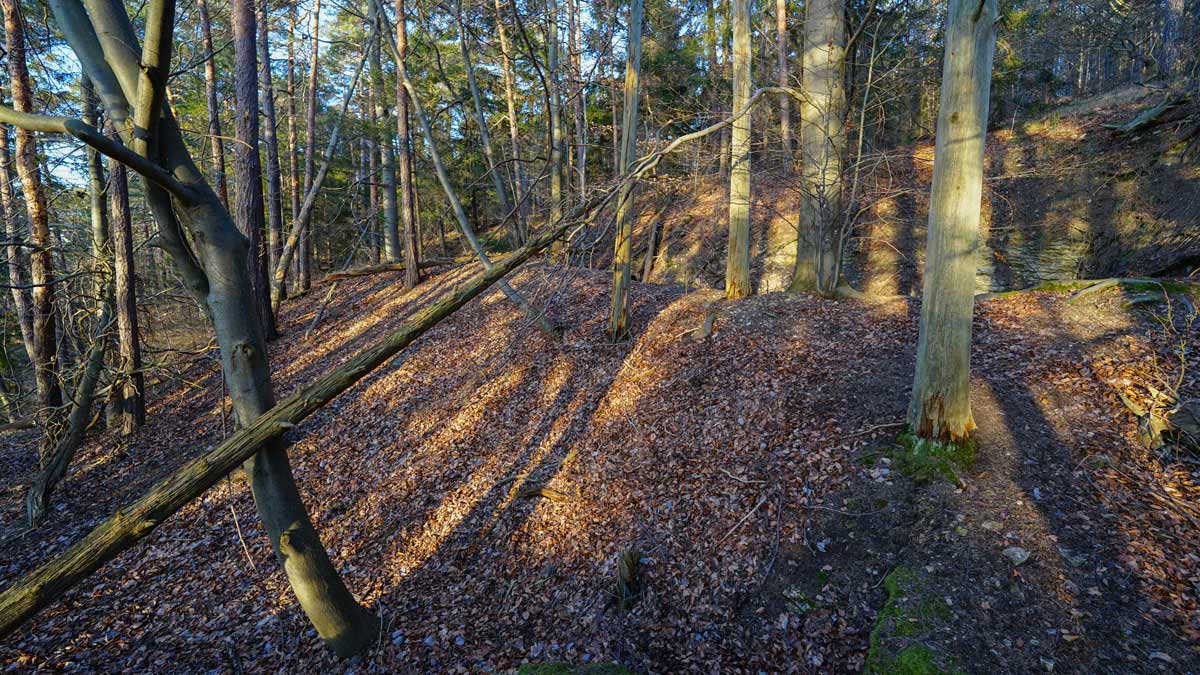

The beginning, the entrance to the chamber holes, can easily be overlooked. If you pay close attention, you can discover petrification in the limestone on the rocky steps of the path.


If you prefer something a little more challenging, you can enjoy the small path directly between the steep rock faces. This isn't for sandal hikers, but it's not rock climbing either. It goes up and down a few times over limestone boulders and dry beech leaves. The rock walls on the left and right are between 2 and 7 meters high. Please do not measure; I just estimated the height.
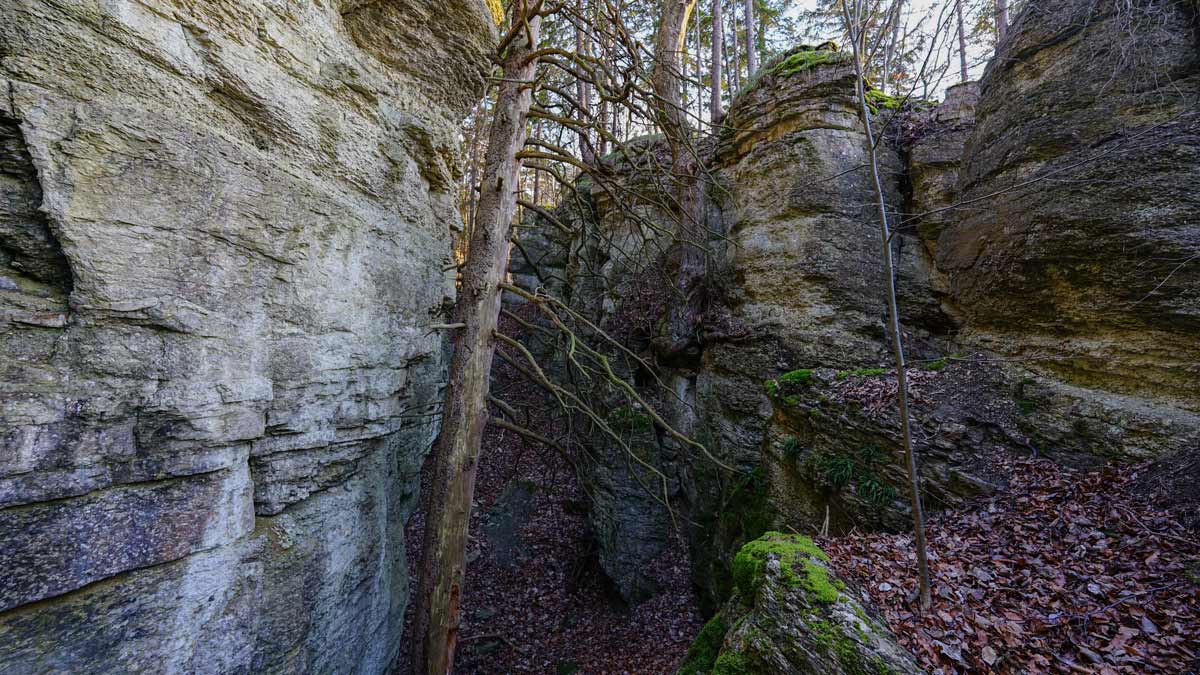
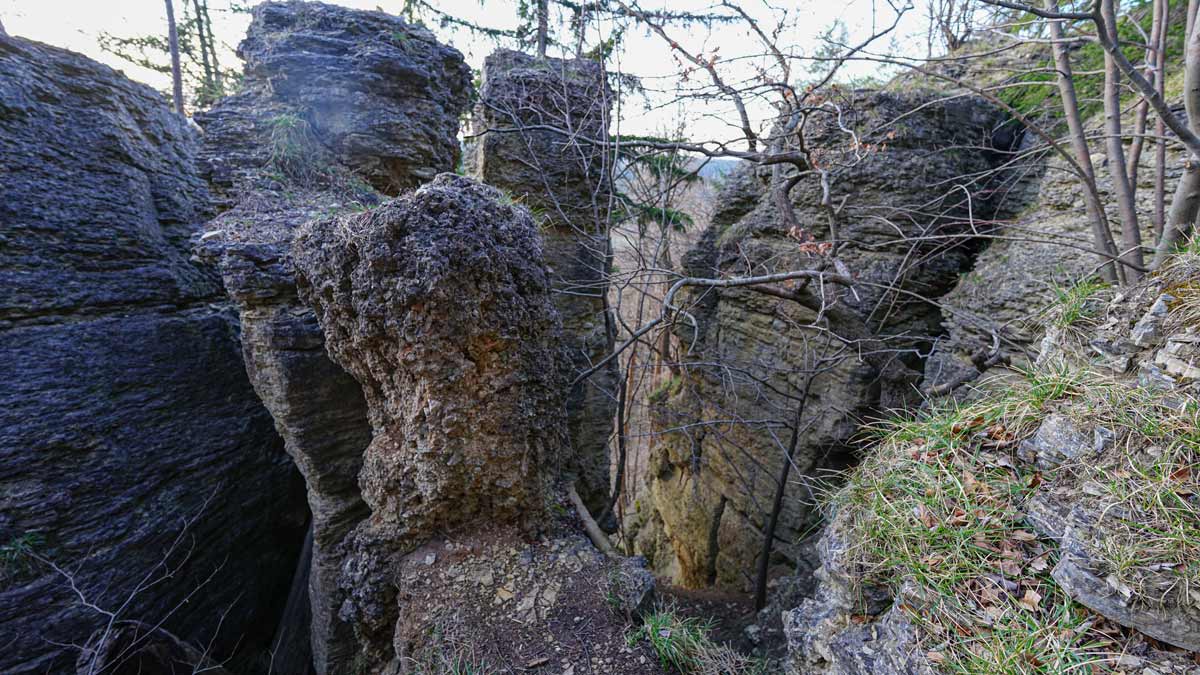
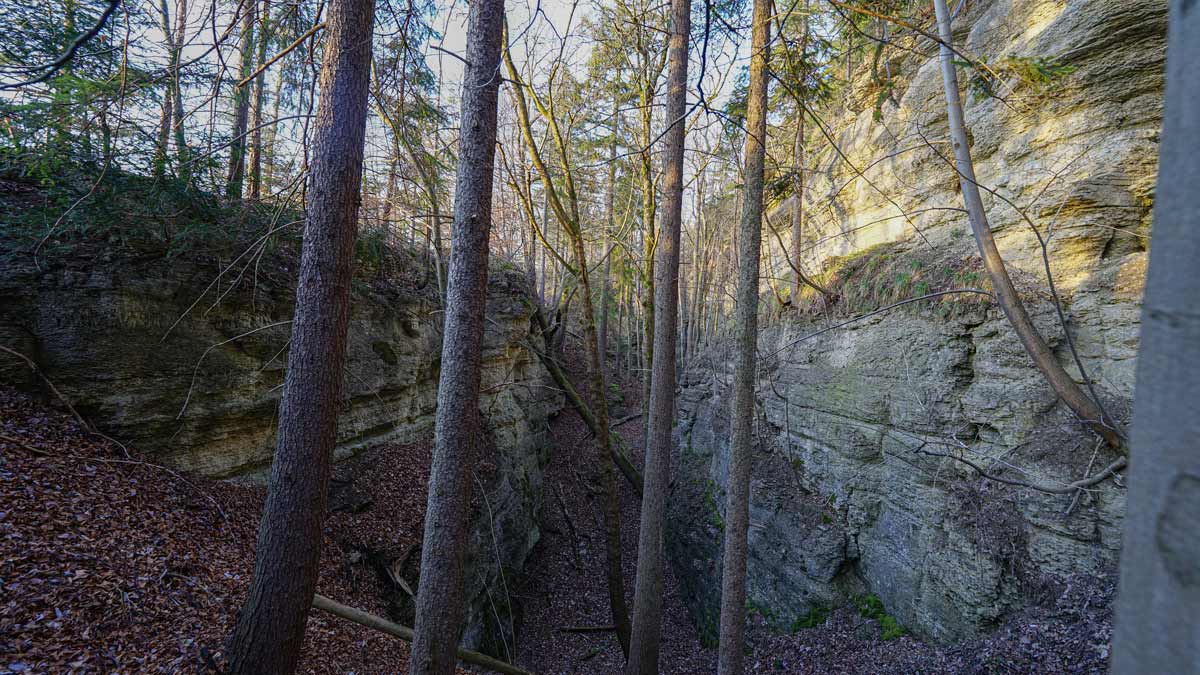
A plateau with a very solid log cabin and a great view of the valley invites you to take a break.
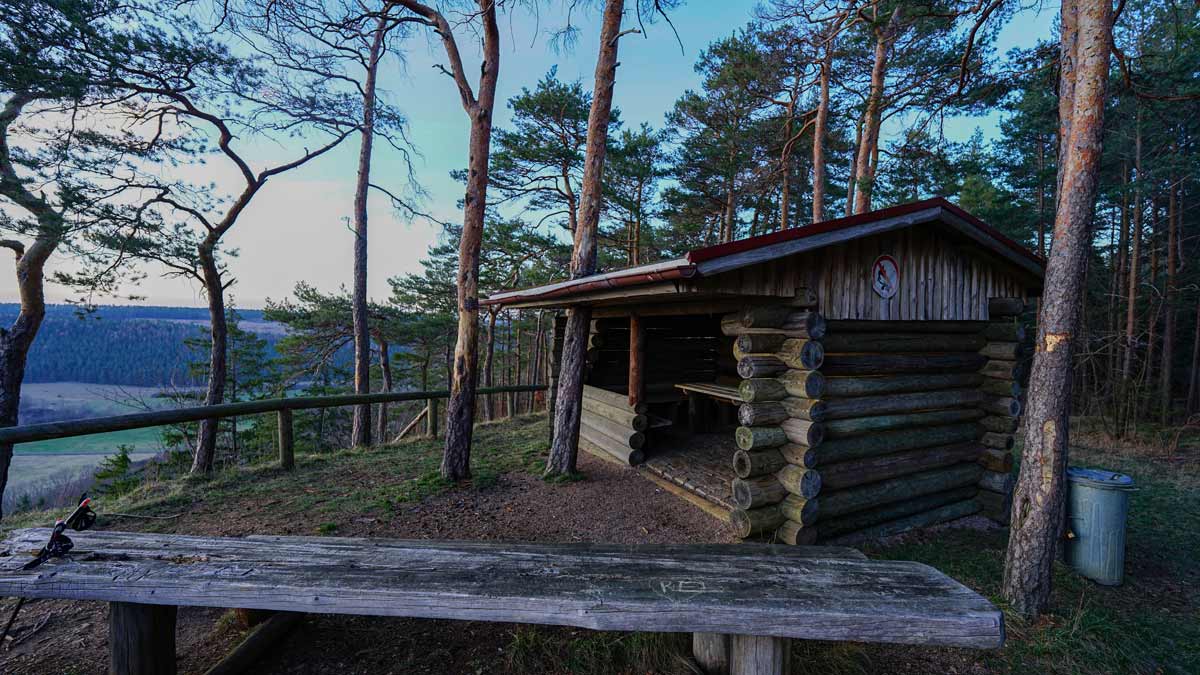
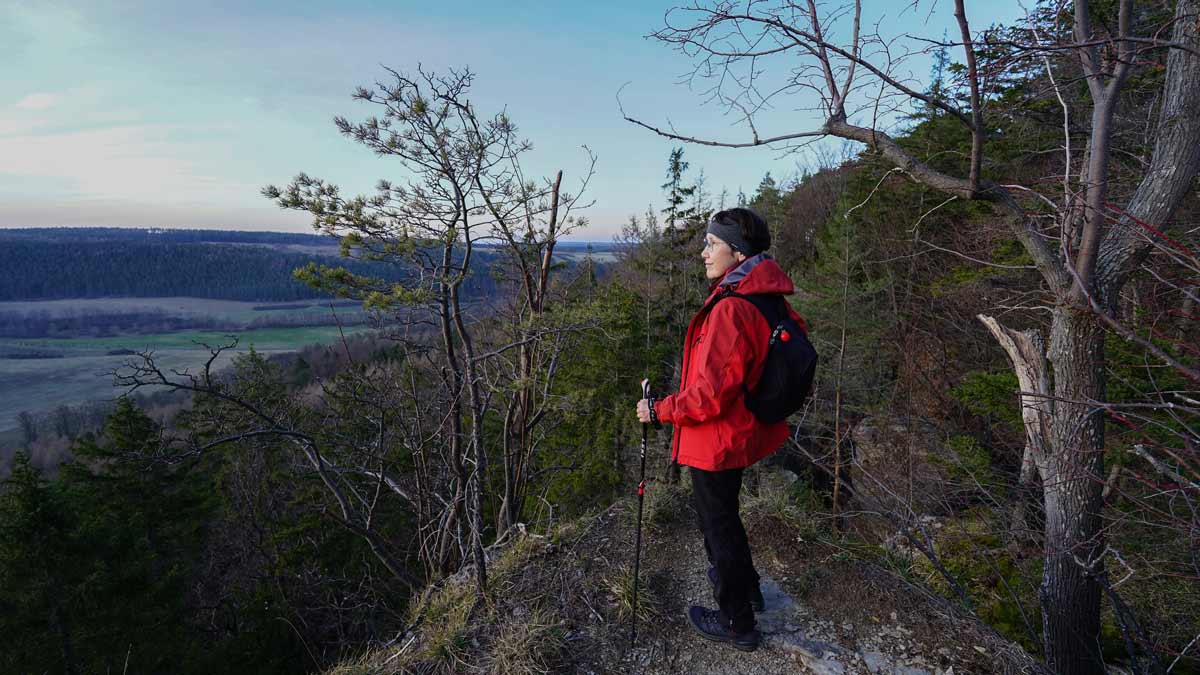
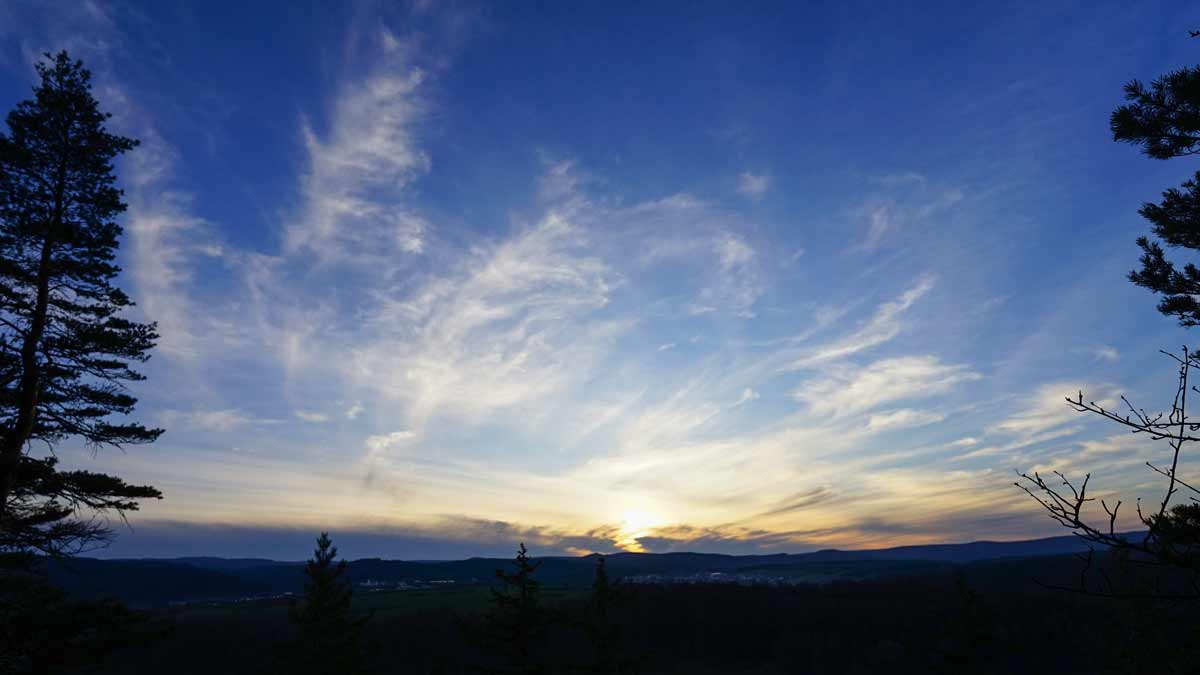
And at the right time there is a great sunset with a view of the Thuringian Forest -
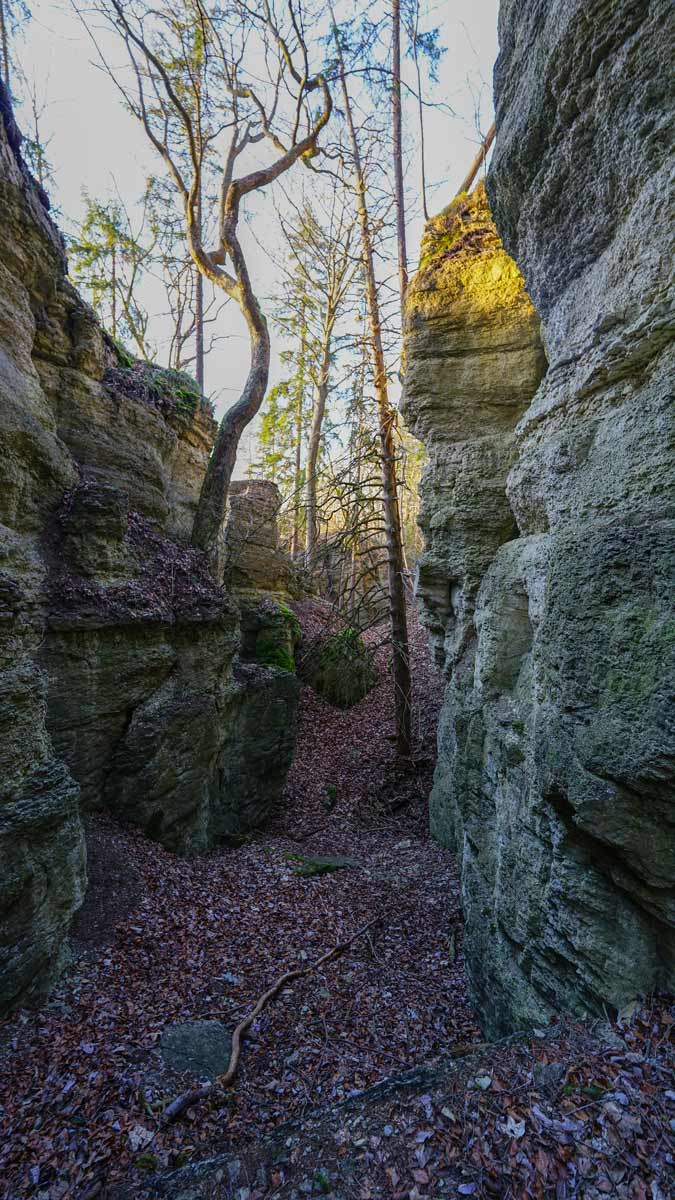
Everything you need to know about the chamber holes
The chamber holes are a fascinating geological phenomenon that can be found in the heart of the Thuringian Forest. This impressive rocky landscape, which stretches between the towns of Angelroda and Geraberg in the middle Ilm district, attracts numerous visitors every year. The Kammerloche are a series of rocky cliffs in the Zahmen Gera valley and form a natural monument of particular beauty.
The creation of the chamber holes
The chamber holes owe their existence to a geological development around 140 million years ago. Back then, during the so-called Saxon mountain formation, the Thuringian Forest rose up from what was once a sea. In the course of these geological changes, extensive limestone plateaus, known as the Ohrdruf Plate, emerged north of the ridge. Due to the action of rivers, individual clods were formed, which also includes the mountain from which the rocks of the chamber holes come, which is known as Reinsberg clod.
Over time, the Zahme Gera dug deeper and deeper into the rock, forming the gorge-like terrain of the chamber holes. Due to the weathering of the relatively soft shell limestone rock and the effect of gravity, individual pieces of rock broke off from the Kirchberg over thousands of years and formed the bizarre rock formations that we can admire today. The chamber holes are a living testimony to the geological layer sequence of the Lower Muschelkalk and give us insights into the history of the formation of this region over millions of years.
The impressive flora of the chamber holes
Another fascinating aspect of the chamber holes is their unique flora. Due to the large differences in solar radiation in small areas, a varied coquina flora has developed in the area of the chamber holes. The slopes of the mountain and the boulders are covered with a protective forest that is home to numerous plant species. Particularly noteworthy are the approximately 50 yew trees that can be found in this area. These evergreen trees give the rocky landscape a special atmosphere and contribute to the biodiversity of the chamber holes.
Myths and legends
The chamber holes are not only a geological wonder, but also the setting for numerous sagas and legends. The legendary rock world, with its tiny depressions and caves, has repeatedly stimulated the imagination of people in the region. One of the most famous legends is that of the “Dwarves of the Chamber Holes”, which was written down by Ludwig Bechstein in the 19th century. This story tells of the invisible dwarves who once lived in the rock chambers and played all kinds of practical jokes on the residents of the surrounding villages. Legend has it that the dwarves could only be made visible through the use of yew branches and that they detested the shape of the cross.
Hiking in the chamber holes
Anyone who visits the Kammerloch can not only experience the fascinating nature and geological beauty, but also explore a wonderful hiking trail. The circular hiking trail, which begins and ends in Angelroda, extends over a distance of around 4.5 kilometers. This path leads through a picturesque beech forest and offers breathtaking views of the Kammerloch and the surrounding landscape. It is important to note that the path is not passable with a stroller, buggy or wheelchair and is therefore more suitable for families with children on foot. You should always exercise caution when hiking in the chamber holes, as the process of rock removal is still underway.